by Neale Rooney
Friday, 1 July sees the centenary of the Battle of the Somme: one of the costliest offensives launched along the Western Front. What was to be a decisive break through the German lines in Northern France quickly became a grinding battle of attrition in which more than a million individuals were wounded or killed. Criticised as a futile loss of human life, the Somme campaign has been contested by historians since. This blog post does not seek to criticise or question the battle, rather it focuses on three voices from the Letters of 1916 collection; the Irish men and women who experienced it first hand. Through their words and letters, we can examine the brutality and tragedy of modern warfare. The individuals in question are Nurse Marie Martin, Captain James Davidson and Sir Wilfrid Spender.
Planning for the battle of the Somme began in December 1915; the Entente concluding that a series of combined offensives would be needed to break the deadlock with the Central Powers in 1916. The French and British Command planned to launch their attack on the banks of the Somme River in the Picardie region of France. The sudden outbreak of the Battle of Verdun in March 1916 diverted the majority of French forces initially intended form the main body of the Somme offensive to the Argonne region, leaving the British Army to take center stage in the offensive.
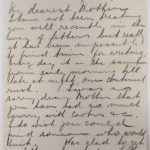
Captain James Davidson, who was Managing Director of the Sirocco Engineering Works in Belfast, served with 13th Battalion Royal Irish Rifles and the Machine Gun Corps. His letters describe his experiences while training in England and serving in France. He wrote a letter home to his mother on 28 May –
‘We are probably moving back from the Line tomorrow or day after. You see we dont get much notice, for even yet it is not definite. We only go a short distance &, as I understand, for a short time, in order to go through some special training of a rather strenuous nature, so it wont mean much rest. However it will be a little relief from the responsibility of holding the Line.’
It is likely that the training mentioned was part of the planning for the Battle of the Somme.The 13th Battalion were initially concentrated around Flesselles for trench familiarisation and training. The 13th Battalion would take over a complete section of the front line between the River Ancre and the Mailly-Maillet to Serre road before July 1.
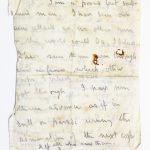
James, like so many others in the 13th Battalion, lost his life on the opening day of the Somme at the Battle of Albert. On the very same day, Sir Wilfrid Bliss Spender went over the top with the 36th Ulster Division near Grandcourt. He wrote to his wife, Lady Lillian, on the 2 July:
‘I am a proud but saddend man. I have seen our attack as no other man in this world could Do. I believe I have seen them win through an inferno which other troops failing ours got through. I have seen their advance as if in drill on parade winning the admiration of the next corps staff & of all who saw them. I know our men are sacrificing their lives by the thousand. I know that their cause is probably in vain owing to the failure on our right & left. It seems to be the fate of the Ulsterman to do the most splendid things with no results… I don’t intend to write of what I saw,but you can tell Sredward [Edward Carson] that I think half our men deserve VCs & Crosses but will not get them of course.’
Sir Wilfrid Spender was a member of the British Army until 1913 when controversy surrounding his signature of the Ulster Solemn League and Covenant resulted in his resignation. Spender was called up for military service in 1914 and from 1915 served in the 36th (Ulster) Division. The British Army suffered near 60,000 casualties on the first day of the Somme, yet the offensive would continue until November. Nurse Marie Martin, a Volunteer Aid Detachment nurse from Dublin, describes an atmosphere of hope, the neccessity of one extra push to break the German lines in her letter from 15 July:
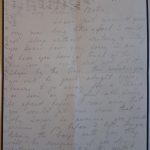
‘It looks like as if the Hospital will be full up to-morrow as I hear convoy after convoy arriving it is so interest as they come straight from Albert. I only wish you could come out & see my tents. I am very busy getting dressing, medicine co-boards make out of all roses & them making curtains of pretty chintz. it has not been opened yet but expect it may tomorrow, if you do not hear for a couple of days don’t worry it is only we have an extra push.’
Of the combat at the front, Spender wrote a second letter to his wife on 2 July describing his experience
‘I got no shell except some lachrymatory which gave me a head-not yet gone-& made my eyes smart. A few shrapnel burst harmlessly over head, but I would gladly have worn some risks to have saved our men if I could.’
Among the expanding arsenal of weaponry employed by combatants at the Battle of Somme was poison gas. Spender writes of Lachrymatory or tear gas, released by German forces on 1 July. As the battle developed, tear gas gave way to Phosgene, a colourless gas responsible for 85% of all gas related casualties in the First World War. Encased in artillery shells and fired from behind the lines, Phosgene could have delayed effects, with symptoms developing up to 48 hours later. Proportionately, the number of gas related casualties increased.
Marie Martin experienced the increase in gas related casualties first hand. She wrote home to her mother on 12 October:
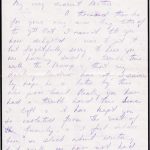
‘…the two tents were full of wounded some very bad others only slight but most of them too bad to have baths so all had to be washed in the wards. this was getting on to 6 o’clock & none of the dressing has been touched so we started off & did all the worst & found a great number had hemorrhage on the way. others we found with Gas gangarene which meant immediate operation which had to be done that night I think we got off about 11 o’clock leaving one poor man named Woods very bad they found he had septic absorption. it had gone too far for amputation & the only chance was to drain the leg & they & get rid of poisoning. Next morning we came in to hear he had been in the theatre during the night again & that the M.O. was going to give a transfusion which is a terrible job in itself & so many of the others were very bad we really did not know where to begin I forgot to tell you that the lad had a Ensol transfusion the night before which I believe is the latest treatment for these gas gangrene in some case I believe it has proved invaluable but it seems Gods will this man should not live he linger on for three day, every thing possible was done for him but he died very quietly on the 3rd night, it is a very sad thing to watch, the patient is so frightfully restless & has to be watched all the time he was quite unconscious on the last day & spoke in such a weird way.’
The Somme offensive lasted for 141 days. A battle that was to be decisive became a constant cycle of attack and counter attack. The Irish Jesuit Chaplain Fr Henry Gill SJ, serving with the 2nd Battalion of the Royal Irish Rifles wrote of the first 10 days of battle:
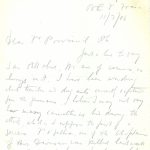
‘This is about the fifth attack I have been in and I feel I know more than I want about shells of all sizes and conditions. It is a horrible and squalid business. Trenches full of mud with bodies of dead Germans and British lying unburied all along. Please God it will end soon and that we may be able to forget it all as quickly as possible. The outstanding thing is real courage and wonderful scruples of officers & men in the midst of the awful wounds and death and squalor all round. Possibly death has lost its terror for me.’
At home, the first news of the Somme was that of a resounding victory, of a successful push dozens of miles into German lines. Gradually, the reality made itself known. Reverend John Pollock, Minister of St. Enoch’s Church in North Belfast, wrote on the 30 August about the loss of his only son, Paul.
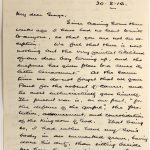
‘We feel that there is now nothing but the very faintest likelihood of our dear boy turning up, and the suspense has give place to a sense of bitter bereavement. At the same time we do not forget that we gave Paul for the noblest of causes, and he most enthusiastically gave himself. The purest war is, on our part, “for the defence of the gospel”. the protection, advancement, and consolidation of the kingdom of God. That being so, I had rather have my son’s body in an unmarked grace, having done his duty, than sitting beside me here, having shirked it.’
Through a quick reading of these letters chronologically, one can see the gradual loosening of the ‘stiff upper lip.’ Letters, which had once reassured the reader, that obfuscated the horrid realities, become an outlet to make sense of the impossible reality that many now found themselves experiencing first hand.
This blog post was just a very quick look at some of the letters in our collection from the First World War. We need your help transcribing, editing and encoding hundreds of letters available here. To read some of the letters in our collection visit the Explore section of the site.